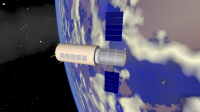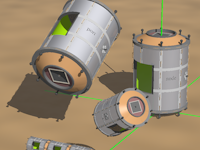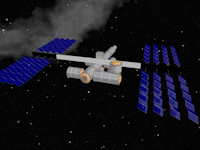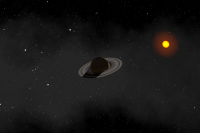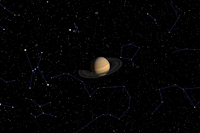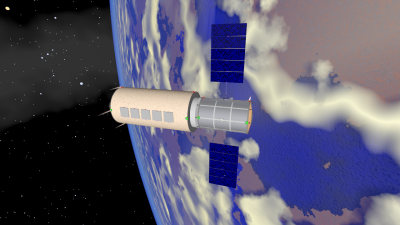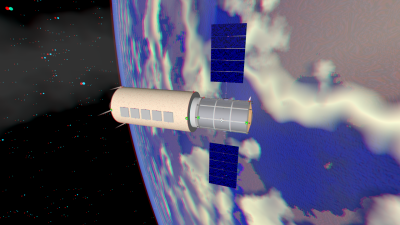Povray --- My first results
A few words about my first month and years with povray. I didnt code for povray all the days, there are other things to do in life, but a few month of free-time per year I invest in it.Very first results
I started programming with povray in 2017, because I liked to check out 3D-development since years. And it was far away from a disappointment, I never expected how fast the first picture appeared on the screen. I installed povray on my Raspberry pi, copied some example-script out of the internet, and there was the yellow sphere in front of me. Unbelievable.
The spheres quickly changed into cylinders because I mainly started with povray to see some space-related ideas get visual. Fictional and non-fictional spacecrafts, that I have had in my head and wanted to see them before my eyes, not in my thoughts only.
I started with a very simple module of a space-station, which showed me quickly, how time-intesive the development from small details can be, and without many details no model looks like a real one.
Much better the thing isnt even two years later, because I am a programmer and not a designer. Instead the programmer started to use its small module to stick many of them together to build up the International Space Station. Doesnt look very well but i did it. Maybe it will grow and get more detailed with one of my Stars
Somewhen a more or less realistic-looking sky filled with stars waited for me, to place my space-models before a appropiate background. By using PHP I converted a SQL-database consisting star-positions into a povray-compatible array and displayed a sphere for every star.
The most complicated part of it was to convert the values of the database, given in right ascension (RA) and declination (DE), into povray-vectors. That was far away from my math-skills, but with some help of Wikipedia and the will to accomplish it I was successful during the third bottle of beer. The result of about two to four hours hard work:
#macro MA_Deg2Vector (mRA, mDE, mRadius)
#local mRect = radians(mRA);
#local mDecl = radians(mDE);
#local mPosX = mRadius * sin(mDecl) * cos (mRect);
#local mPosY = mRadius * cos(mDecl);
#local mPosZ = mRadius * sin(mDecl) * sin (mRect);
#local mVector = <mPosX, mPosY * -1, mPosZ>;
mVector
#end
First bigger Animations
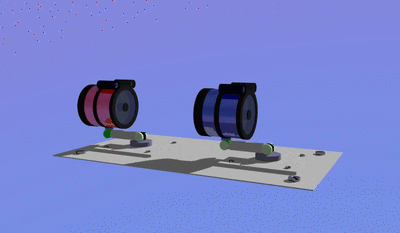
See the video on Youtube
- rotation lower hinge
- tilt angle lower hinge
- tilt angle upper hinge
- rotation upper hinge These I save in arrays, simulated by comma or semicolon separated strings.
SCR_Register_Base("tele-stowed", "+000,-090,+090,+000")
SCR_Register_Base("tele-stowed-half", "+000,-050,+050,+000")
SCR_Register_Base("tele-null", "-000,-000,-000,-000")
SCR_Register_Base("tele-camera", "+000,+000,+000,+070")
#local mPosStowed = "+000,-090,+090,+000";
#local mPosStowedHalf = "+000,-050,+050,+000";
#local mPosNull = "+000,+000,+000,+000";
#local mPosCamera = "+000,+000,+000,+070";
#local mPos1 = "+000,+000,-040,-050";
#local mPos2 = "+000,+000,+020,+130";
The positions will be stowed into an array, which describes the timeline.
#local mArray = array[17][3] {
{ " 0", "tele-stowed", mPosStowed }
{ " 1", mPosStowed, "=1" }
{ " 4", "tele-null", mPosStowed }
{ " 6", mPosNull, "tele-null/t:-0.5" }
{ " 7", mPos1, mPos2 }
{ " 9", mPos1, mPos2 }
...
{ "20", mPos2, mPos3 }
{ "23", mPos2, concat(mPos1, "/t:0.5") }
{ "26", mPosCamera, "tele-camera/t:-0.5" }
{ "27", mPosCamera, "tele-camera/t:0.5" }
{ "28", mPosStowedHalf, mPosStowedHalf }
{ "30", mPosStowed, "tele-stowed" }
}
"tele-stowed" or mPosStowed uses the values declared above.
"=1" copies the position from index 1.
"t:-0.5" substracts 0.5 seconds from the timeline, to easily implement tiny differences. This done, the telescopes will beome feeded with their informations.
SCR_SetMatrix ( "tele" , "all", mArray, 1 )
SCR_SetMatrix ( "tele2" , "all", mArray, 2 )
Far away from finished but even in this early state its nice to work with it. Maybe somewhen in late 2019 I hope to publish the macro-collection, but there is much to do till then.
Earth-Moon-Shuttle
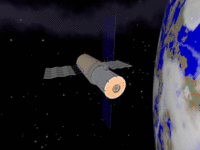
The complete video on Youtube
Comments
No comments at all, sorry.
* E-Mail and Website optional, E-Mail will not get published, use this only if you like to get an answer.
the german site
the english site
both sites
the english site
both sites


